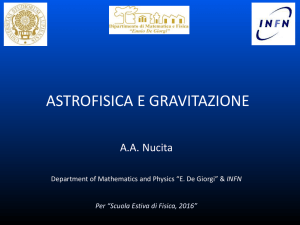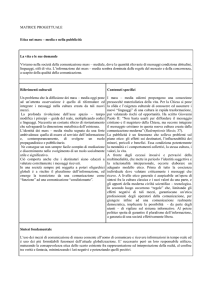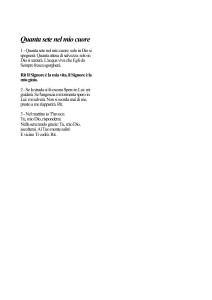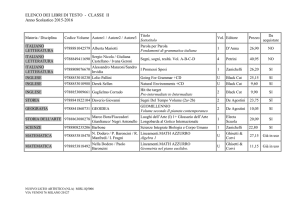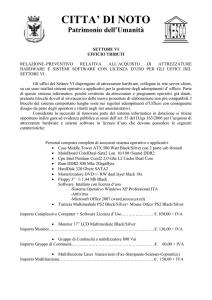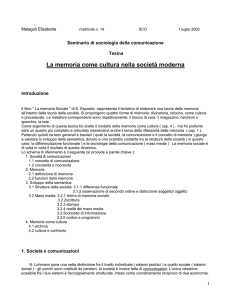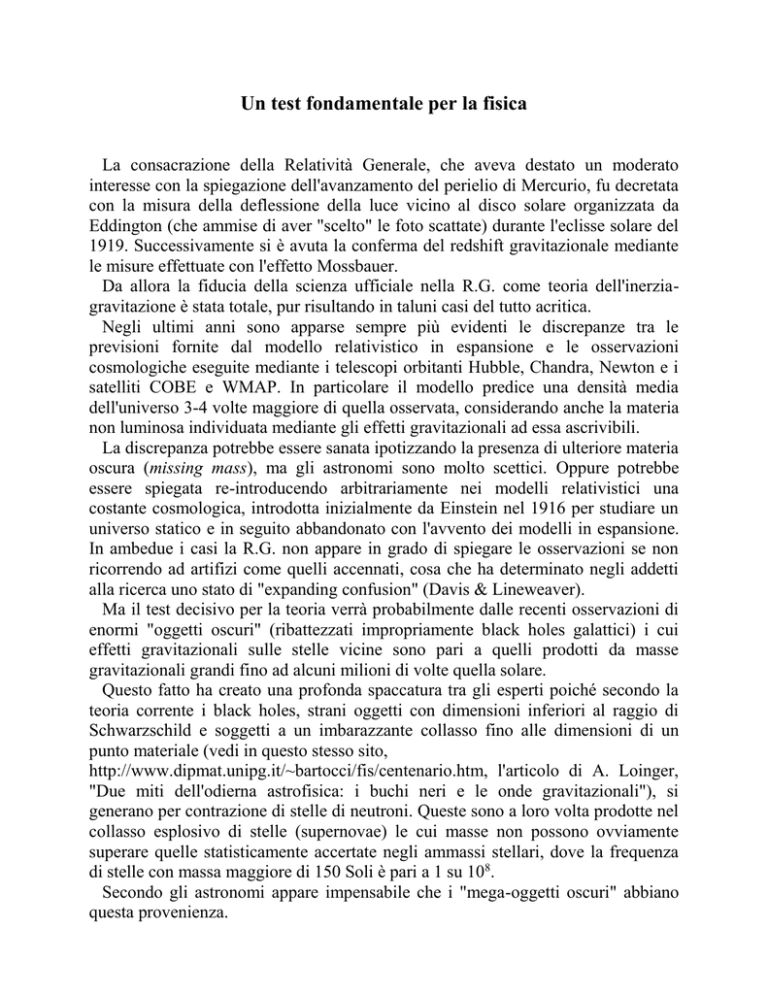
Un test fondamentale per la fisica
La consacrazione della Relatività Generale, che aveva destato un moderato
interesse con la spiegazione dell'avanzamento del perielio di Mercurio, fu decretata
con la misura della deflessione della luce vicino al disco solare organizzata da
Eddington (che ammise di aver "scelto" le foto scattate) durante l'eclisse solare del
1919. Successivamente si è avuta la conferma del redshift gravitazionale mediante
le misure effettuate con l'effetto Mossbauer.
Da allora la fiducia della scienza ufficiale nella R.G. come teoria dell'inerziagravitazione è stata totale, pur risultando in taluni casi del tutto acritica.
Negli ultimi anni sono apparse sempre più evidenti le discrepanze tra le
previsioni fornite dal modello relativistico in espansione e le osservazioni
cosmologiche eseguite mediante i telescopi orbitanti Hubble, Chandra, Newton e i
satelliti COBE e WMAP. In particolare il modello predice una densità media
dell'universo 3-4 volte maggiore di quella osservata, considerando anche la materia
non luminosa individuata mediante gli effetti gravitazionali ad essa ascrivibili.
La discrepanza potrebbe essere sanata ipotizzando la presenza di ulteriore materia
oscura (missing mass), ma gli astronomi sono molto scettici. Oppure potrebbe
essere spiegata re-introducendo arbitrariamente nei modelli relativistici una
costante cosmologica, introdotta inizialmente da Einstein nel 1916 per studiare un
universo statico e in seguito abbandonato con l'avvento dei modelli in espansione.
In ambedue i casi la R.G. non appare in grado di spiegare le osservazioni se non
ricorrendo ad artifizi come quelli accennati, cosa che ha determinato negli addetti
alla ricerca uno stato di "expanding confusion" (Davis & Lineweaver).
Ma il test decisivo per la teoria verrà probabilmente dalle recenti osservazioni di
enormi "oggetti oscuri" (ribattezzati impropriamente black holes galattici) i cui
effetti gravitazionali sulle stelle vicine sono pari a quelli prodotti da masse
gravitazionali grandi fino ad alcuni milioni di volte quella solare.
Questo fatto ha creato una profonda spaccatura tra gli esperti poiché secondo la
teoria corrente i black holes, strani oggetti con dimensioni inferiori al raggio di
Schwarzschild e soggetti a un imbarazzante collasso fino alle dimensioni di un
punto materiale (vedi in questo stesso sito,
http://www.dipmat.unipg.it/~bartocci/fis/centenario.htm, l'articolo di A. Loinger,
"Due miti dell'odierna astrofisica: i buchi neri e le onde gravitazionali"), si
generano per contrazione di stelle di neutroni. Queste sono a loro volta prodotte nel
collasso esplosivo di stelle (supernovae) le cui masse non possono ovviamente
superare quelle statisticamente accertate negli ammassi stellari, dove la frequenza
di stelle con massa maggiore di 150 Soli è pari a 1 su 108.
Secondo gli astronomi appare impensabile che i "mega-oggetti oscuri" abbiano
questa provenienza.
Sono stati in alternativa studiati modelli di formazione di grandi masse oscure
mediante accretion di gas galattico in analogia con i modelli che consentono nei
sistemi binari l'aumento di massa della stella di neutroni oscura mediante
sottrazione di materia gassosa dalla vicina compagna luminosa. Le osservazioni
hanno mostrato che i corpi oscuri nei sistemi binari hanno masse comprese tra 3 e
21 masse solari, a somiglianza delle compagne luminose. In ogni caso l'innesco
della crescita di un mega-oggetto oscuro dovrebbe essere stata una stella di
neutroni superdensa (oscura).
Nella nostra teoria, la contrazione delle stelle oscure si arresta quando viene
raggiunta la densità limite prevista. Pertanto esse appaiono candidati più credibili
alla formazione dei massicci oggetti galattici rispetto ai classici black holes con
tendenza al collasso gravitazionale illimitato.
Tuttavia la possibilità concreta che una stella oscura possa attirare a sé da grande
distanza, in competizione con la formazione di miliardi di nuove stelle, una massa
pari (secondo i succitati modelli) fino al 10% del totale galattico, lascia alquanto
scettici soprattutto se inquadrata entro le età attribuite alle galassie spirali (non più
di qualche miliardo di anni). Dunque da questo dilemma non si esce se non
cambiando radicalmente l'origine fisica della forza gravitazionale.
Una volta chiarito che l'impianto logico della R.G. è stato concepito per
descrivere le osservazioni visive dei fenomeni prodotti da masse gravitazionali
newtoniane, il buon funzionamento mostrato dalla teoria non può che apparire
scontato se ci si mantiene entro i limiti della gravitazione newtoniana. Tuttavia le
osservazioni degli "oggetti oscuri galattici" ci inducono a negare che la R.G.
costituisca una teoria fisica della forza gravitazionale.
Per trovare una spiegazione del tutto soddisfacente occorre sostituire al vecchio
paradigma "massa gravitazionale" un nuovo paradigma fisico mediante il quale una
stella di neutroni superdensa genera una forza fino a milioni di volte maggiore di
quella esercitata da una stella di uguale massa, ma poco densa (come il Sole).
Il nuovo paradigma è costituito da un flusso di quanti cosmici responsabili della
elevata densità di energia del "vuoto", la quale è invece nulla nello spazio
relativistico. E' stato dimostrato che il paradigma soddisfa le equazioni della
meccanica relativistica, spiegando l'aumento di massa al crescere della velocità e
l'equivalenza massa-energia. In altre parole lo spazio entro cui si muovono le masse
non è più un ente matematico (sia pure deformabile per azione delle masse), ma
una realtà fisica che impone alla materia in esso immersa le leggi del moto e della
conservazione dell'energia.
I quanti cosmici, la cui lunghezza d'onda è pari 4x10-35 (lunghezza di Planck),
pervadono l'universo penetrando attraverso le masse degli ordinari corpi celesti e
sono in grado di spiegare, in stretto accordo con il principio di equivalenza, sia la
gravitazione newtoniana tra due masse (attraverso la cessione Compton di una
piccola quantità di moto nelle collisioni con le particelle costituenti le masse
mutuamente schermanti), sia la supergravità prodotta da masse superdense come le
stelle di neutroni, nel cui interno i quanti cosmici subiscono una più elevata
riduzione della quantità di moto.
Sotto queste nuove ipotesi si può osservare la contrazione della stella di neutroni
in quanto il redshift dei fotoni emessi cresce con continuità (anche se il raggio
diventa minore del raggio di Schwarzschild) riducendo la radiazione ricevuta (cioè
oscurando la stella) secondo modalità caratteristiche di ogni sistema
termodinamico. La forza gravitazionale dell'oggetto oscuro rimane invece intatta in
quanto legata alla realtà dei quanti cosmici.
Viceversa la R.G. non spiega perché la curvatura dello spazio, che produce il
redshift della radiazione elettromagnetica, non riduca anche la frequenza delle
onde-particelle di campo gravitazionale.
Durante la contrazione della stella il redshift subisce una discontinuità (la
frequenza della radiazione si annulla bruscamente al passaggio attraverso il raggio
di Schwarzschild) che ha dato la stura a una serie di congetture sul black hole (non
ha superficie, il tempo e lo spazio vengono distorti, ecc) privandolo di ogni chiara
caratteristica fisica. A questo proposito A. Loinger ha analizzato le proprietà del
vecchio Dark Body, già studiate da Michell e Laplace nell'ambito della teoria
corpuscolare della luce, mostrando che l'erronea genesi del Black hole proviene
dalla impossibilità dei corpuscoli emessi di superare la distanza di Schwarzschild
dal baricentro (arXiv: physics/0310058 v2). Nella teoria ondulatoria della luce i
fotoni emessi possono superare la barriera di Schwarschild, ma il loro redshift
aumenta esponenzialmente oscurando la stella secondo criteri termodinamici.
Questa differenza nel concepire le proprietà degli "oggetti oscuri" dovrebbe
apparire manifesta nei sistemi binari nei quali la stella di neutroni è in procinto di
diventare invisibile. Esiste infatti il sospetto che le stelle di neutroni continuino ad
emettere nello spazio una radiazione shiftata anche dopo aver superato il raggio di
Schwarzschild.
Questa problematica è oggetto di una "Lettera" inviata alla rivista Nature, qui di
seguito riportata, che ha seguito con attenzione l'evolversi delle osservazioni sui
mega-oggetti oscuri.
Maurizio Michelini
ENEA, Casaccia Research Centre
via Anguillarese 301, Rome, Italy
Why several observed black holes show masses
much higher than progenitors?
The lucky observations with the X-ray Newton satellite (ESA) in a distant galaxy
of three luminous orbiting bodies (27 hours period) orbiting around a black hole1
gave recently the possibility to calculate a gravitational mass of about 300,000 Sun
masses. Previously, an intermediate black hole of 1300 Sun masses was found
observing a rotating cluster of seven stars in the centre of our galaxy2. In this region
it was known to reside a huge galactic mass, firstly estimated around 2.6x10 6 solar
masses3 and successively resulted in 3.7x106 solar masses through a ten-years
observation of an orbiting star4.
D.Figer recalled5 that in the Arches cluster there aren't stars heavier than 150 solar
masses, calculating a probability 10-8 that such masses might be observed. In the
same issue P.Kroupa6 pointed out that the Arches cluster is populous enough to
infer the existence of stars as massive as 150 sun masses. Since they are totally
absent from the observations, he concluded that they are unable to form. Here we
discuss the origin of these huge black holes, which upset all preceding observations
accounting for the masses of the progenitors.
The black holes normally originate from the slow cooling and contraction of the
neutron stars formed in the implosive collapse of massive stars. The black hole
masses observed in binary stars are in the range 3-21 solar masses7,8,9 which agree
with the masses of the progenitors. The observations of huge black holes are
currently explained assuming the mechanism of mass accretion ascertained in the
binary systems. The formation of supermassive black holes up to 10 9 Sun masses
by accretion of galactic gas has been extensively analysed10, showing they are
currently growing at a rate which is several orders of magnitude lower than in past.
The black hole accretion by mass-transfer on galactic scale happened in
competition with the local formation of billions of stars, since both are fuelled by
the same distributed gas. We have no title to discuss about the efficiency of this
long range mass-transfer mechanism.
Here we present a physical vision which accounts for the huge gravity (not the
huge mass) of the observed black holes. The contrast between the observed huge
masses and the progenitor masses may be theoretical, opening to doubt the classical
gravitation theories based on the universal gravitation constant G.
At least in the above reliable measurements, we think that gravity acting on the
orbiting bodies really attains respectively 1300 or 300,000 or 3.7x10 6 times the
standard gravity.
However the mass of the black holes does not necessarily take figures different
from that of progenitors. May these contrasting features be both correct ?
A rational answer to this question requires to renounce the reassuring concept of
gravitational mass, the paradigm proposed by Newton three centuries ago. A new
physical theory [M. Michelini, "The cosmic quanta paradigm and the inertiagravitation theory. Effects on cosmology and nuclear forces", not published] claims
that the gravitational force originates not from the drawing masses, but from the
flux of cosmic quanta (energy Eo) which push each other the masses. In this
paradigm the huge star gravity is related to the "weakened" cosmic quanta leaving
the dense neutron star or black holes. Here the black holes are the natural product
of the neutron star contraction, without no reference to the Schwarzschild radius
which was often indicated in general relativity as the limiting radius in the star
collapse. This concept would create in fact the paradox of a little density in the case
of galactic black holes with huge mass.
The present paradigm assumes that the void is filled by a flux o of very small
quanta the wavelength o equals the Planck's length which easily penetrate the
ordinary matter travelling throughout the space. The small quanta with momentum
Eo/c originate through Compton's collisions with particles a quantum gravitation
which explains some unsolved problems of physics and cosmology. For instance,
the embarrassing unlimited gravitational collapse vanishes in this frame since the
density of matter cannot exceed certain limits linked to the inertial cross-section
of the nucleons. The flux o, coming isotropically from the space, interacts with a
nucleon of mass mo through a high number of simultaneous collisions. In this case
the quanta do not lose energy or net momentum on the particle, since each quantum
collides in couple with another having exactly the opposite momentum. From these
characteristics it has been demonstrated that a free particle moving with velocity v
respect to an inertial frame (i.e. respect to the fixed masses floating within the
bubble of the universe filled by the cosmic flux) shows the relativistic momentum q
= mo v / (1- v2/c2 )½.
This implies that the cosmic flux is responsible of the relativistic inertial forces
arising from the time derivative of this momentum. The interaction of cosmic
quanta with matter originates both gravitation and inertia as strictly required by the
principle of equivalence.
From this principle descends a fundamental postulate: each particle is characterised
by a cross-section proportional to the mass, so the ratio ( /m) = Ao is the same
for all particles.
To resume, the flux of cosmic quanta fits the Special relativity theory, whose laws
in turn express the existence of a flux of small quanta filling the space.
We describe in the Method's Section the indispensable elements of the theory
regarding the strong gravitational force (see eq.5) of very dense neutron stars. This
strong interaction defines an equivalent mass M* = (neq /a)M multiplying the
Newton's gravitational mass by the gravity factor (neq /a) defined in eq.(8).
Substituting the parameters of a dense neutron star, eq.(8) gives figures up to 103
(1+), where is the contribution of the electromagnetic radiation pressure.
Considering the maximum predicted density of a collapsed black hole (10271028),
the gravity factor may attains 106(1+), which agrees with the reliable observation
of gravity of the huge black hole in our galaxy4.
The huge masses of the galactic black holes have to be interpreted as huge (non
newtonian) gravitational forces related to the weakened cosmic quanta En leaving
the black hole after doing many collisions (see eq.5). An other current paradox
which finds solution, is the permanence of the gravitational field/force outside the
black hole. In the classical theory this was a serious problem since it was not clear
why the black hole brakes the photons (redshift), but does not alter the gravitational
field waves.
Even the «approaching» of the orbiting celestial bodies, which is unknown to the
classical gravitation, may be explained. Putting eq.(8) in the form (neq /a)
3.6x1017/R M1/3 shows that the effective gravity of a dense star G(R) = (neq /a)G
depends on its radius. Hence the gravity G(R) increases when R reduces and the
orbiting bodies really get closer to the collapsing black hole.
The gravity factor (neq/a) appears also useful to explain the "missing mass" within
the spiral galaxies. The observations11 show that the luminous mass M(r) is not
sufficient to bind the stars, since the observed rotation velocities are practically
constant along the spiral arms, contrarily to the diminishing Newton's velocities
v2(r) = GM(r) / r. This discrepancy might be explained taking into account both the
mass of the distributed hydrogen gas and introducing the gravity factor (neq /a) of
the dense stars, provided their number is high enough. For instance, the most
abundant population6 in galaxies are the dwarf stars (red, white and brown), whose
gravity factor is somewhat higher than 1. To this contribution one has to add the
high gravity factors of the neutron stars and black holes, multiplied by the
respective population.
Methods
In the collision with a particle , the energy Eo of the cosmic quanta reduces
(Compton effect) to the level
(1) E1 = Eo/(1+ Ko)
where Ko = Eo/mc2 equals 3.94x10-51. By consequence the quanta which suffered a
preceding collision upon the other mass, show a momentum E1/c , whereas the
opposite quanta coming from space show Eo /c. In this elementary exposition, two
masses at the distance r interact through the beam of cosmic flux comprised in the
small shielding angle (steradiant) 1(r) = (M1/m) / 4 r2 offered by the transparent
mass M1.
The two opposite quanta (Eo , E1) give each mass the differential momentum q =
(Eo E1)/c which tends to get closer the masses. The collisions upon the total crosssection (M2 /m) of the transparent mass M2 , generate a drawing force
(2) F = q (M2 /m) 1(r)o
which, substituting the above quantities, becomes
(3b) F = [KoEoAo2o / 4c]M1M2/r2.
Evidently, F equals the Newton's gravitational force when the quantities in brackets
satisfy the condition
(4) [KoEoAo2o / 4c] = G
which gives a first constraint to the cosmic quanta characteristics. By means of
other constraints the following constants were obtained : Eo = 5.91x10-61 , Ao =
4.63x10-11 , o = 2.43x10130 , o = 4.05x10-35. So far the nucleons has been assumed
not self-shielding. Hence the Newton's gravitation appears to be correct for the
transparent masses.
Within a mass of density i ,the mean free path of cosmic quanta is li Ao i
Let's consider an opaque mass of radius Ri whose optical thickness is ai (4/3)Ri /li
= AoMi /Ri2. This mass offers, in this elementary exposition, the shielding angle
given by the expression
i(r) (AoMi /4 ai r2) (1 e-a)
which is coherent (when a 0) with the expression of 1(r) for a transparent mass.
Putting n the average number of collisions done within the mass, the leaving quanta
show an energy reduced to the level
(5) En = Eo/(1+ nKo)
obtained considering the equations of the Compton effect up to n collisions.
By consequence the momentum that each couple of quanta leaves on the mass is
qn = (Eo En)/c which becomes qn nKoEo/c because nKo<<1 for any star.
Substituting i(r) and qn in eq.(3a) and recalling eq.(4), one gets the general
expression of the strong gravitational force
(5) F (n / a) (1 e-a ) G Mi M / r2
where the Newton's gravitational constant is multiplied by the gravity factor
(6) (n / a) (1 e-a )
which takes for transparent masses (a <<1) the figure 1.
Obviously the classical gravitation holds whenever 1, as it happens for planets
and for low density stars made of (partially ionised) atoms, where n depends on the
gas pressure given by the equation of state of ideal gases.
For the Earth it has been found an optical thickness a 2.2, whereas the Sun shows
a 62.
For the white dwarf stars a is comprised in the range 105106.
When the optical thickness of a star is as high as in the case of the white dwarfs
(which imply e-a = 0) it follows that the average number of collisions n that quanta
undergoes within the mass increases more rapidly than the optical thickness aso
the gravity factor (n/a) becomes greater than 1. This happens because the
colliding quanta undergo a small deviation from the trajectory, so they remain
within the mass after doing a number of collisions n greater than a, which is the
number of collisions of ideal quanta moving in a straight line.
The number n is linked to the gravitational force f(r) produced within a star by the
net radiation pressure po(r) due to the inward quanta Ei and the outward quanta Ej
hitting upon a nucleon f(r) = o (Ei Ej)/4c = n(r)KooEo /4c = po(r) , being
j(r) i(r) = n(r). Summing up the forces f(r) to all nucleons , one gets the
gravitational pressure pg(r).
The star stability is linked to the local thermodynamic equilibrium between the
gravitational pressure and the pressure of the constituent gas plus the
electromagnetic radiation pressure.
When the density approaches the characteristic figures of a neutron star, the gas
pressure is given by the equation of state of the degenerate matter pd = 2 2 5/3/5me
m5/3.
Assuming the average gravitational pressure pg(n) = 0.324 n GM1/3 2/3/Ao, the
stability of a neutron star is roughly expressed by pg(n) = pd(1+) where is the
ratio between the electromagnetic radiation pressure and the gas pressure. This
condition of equilibrium requires an average number of collisions neq
2.26x107(1+)M1/3.
Then, by definition, the gravity factor of a neutron star results
(7) (neq /a) 5.8x1017(1+) 1/3/M2/3
which holds for proper densities and masses, also considering that in a neutron star
the electromagnetic radiation pressure may exceed the degeneracy gas pressure.
References
1-
L.Miller et al. , Communication to Amer. Astron. Soc. Conf. (S.Diego,
Cal.,January 2005) Nature News, DOI 10.1038/050110-6
2-
3-
4-
5678910-
11-
J.Maillard, T.Paumard, S.Stolovy, F.Rigaut, The nature of the galactic center
source IRS 13 revealed by high spatial resolution in the infrared, Astron.Astrophys.,
423,155-167 (2004)
F.Baganoff, M.Bautz, W.Brandt, G.Carthas et al., Rapid X-ray flare from the
direction of the supermassive black hole at the Galactic Centre, Nature, 413, 45-48
(2001)
R.Schoedel, T.Ott, R.Genzel, R.Hofmann et al., A star in a 15.2-year orbit
around the supermassive black hole at the centre of the Milky Way, Nature,419,
694-696 (2002)
D.Figer, An upper limit to the masses of stars, Nature Letters, Vol.434,192-194
(2005)
P.Kroupa, Stellar mass limited, Nature News & Views,Vol.434,148-149 (2005)
H.Van den Heuvel, G.Habets, Observational low mass limit for black hole
formation derived from massive X-ray binaries, Nature, 309,598-600 (1984)
J.Greiner, J.Cuby, M.McCaughrean, An unusually massive stella black hole in
the Galaxy, Nature,414, 522-525 (2001)
R.Blandford, N.Gehrels, Revisiting the balck holes, Physics today, June 1999
T.Heckman, G.Kauffmann, J.Brinchmann, S.Charlot et al., Present-day growth
of black holes and bulges: the Sloan Sky Survey Perspective, Astron. Journal,
613,109-118 (2004)
A.Aguirre, C.Burgess, A.Friedland, D.Nolte, Astrophysical constraints on
modifying gravity at large distances, Class. Quantum Gravity, 18, 223-232 (2001)


